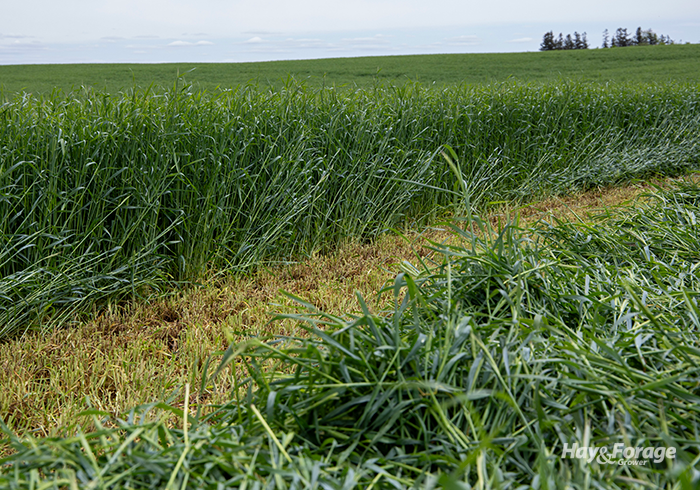
Olympic athletes train and compete in the events for which they were built for. That’s why a long-distance runner likely wouldn’t medal in the 100-meter dash, and a sprinter probably couldn’t compete in the marathon.
Likewise, winter cereal forages are suited to specific production systems. Winter rye, winter triticale, and winter wheat offer different maturity dates and quality rankings that designate which is better for hay or grazing. Choosing which species to plant depends on the end goal of the forage, as well as the subsequent crop in the rotation.
Winter cereal seeding dates are on the horizon, and to optimize forage potential, Kevin Sedivec with North Dakota State University recommends utilizing winter rye or winter triticale for grazing. Winter wheat, on the other hand, tends to provide the best feed quality and tonnage for hay.
Graze rye and triticale
Winter rye is typically the fastest maturing species of the three options, although there may be some varietal differences. With that said, winter triticale reaches maturity close on the heels of winter rye, and both forages can lengthen either shoulder of the grazing season.
For fall grazing, wait until forage is at least 6 to 8 inches tall. Winter rye can tolerate a stubble height of 1 to 2 inches, whereas winter triticale requires at least 3 inches of stubble. Research from North Dakota State University shows fall grazing of winter rye did not impact spring forage production, and Sedivec adds that winter rye is hardier than winter triticale in northern states.
Practice the same grazing guidelines the following spring, turning cattle out when plants are 6 to 8 inches tall. Forage growth will be faster this time of year, and winter rye and winter triticale can reach maturity within a few weeks. To boost forage utilization and keep cattle from selectively grazing around older plants, strip graze pastures and move animals daily.
Bale winter wheat
Winter wheat is relatively slow growing, which takes it out of the running as a good grazing forage. This does, however, put it in a position to generate better hay yields. Sedivec adds winter wheat has more crude protein and less lignin than winter rye and winter triticale, which also make it a more palatable and higher quality feedstuff.
With that said, winter wheat typically reaches maturity two to three weeks later than winter rye and winter triticale, which may limit subsequent cropping options. Consider seeding a warm-season forage like sorghum-sudangrass or millet after winter wheat, especially in northern regions.
Winter rye and winter triticale can still be used for hay, but they must be harvested at the early heading stage to capture adequate feed value. The two winter cereals are lower in crude protein and digestible energy than winter wheat, and if either species is harvested after seed development, Sedivec suggests grinding hay to optimize the reduced forage quality.
The benefits of growing winter cereals go beyond additional feed. These species can inhibit annual weeds from germinating in fields during the offseason, and keeping living roots in the soil during this time helps prevent erosion. Continuous living roots also promote better soil structure and enhance soil biology, and incorporating grazing livestock into crop systems represents yet another pillar of soil health.

